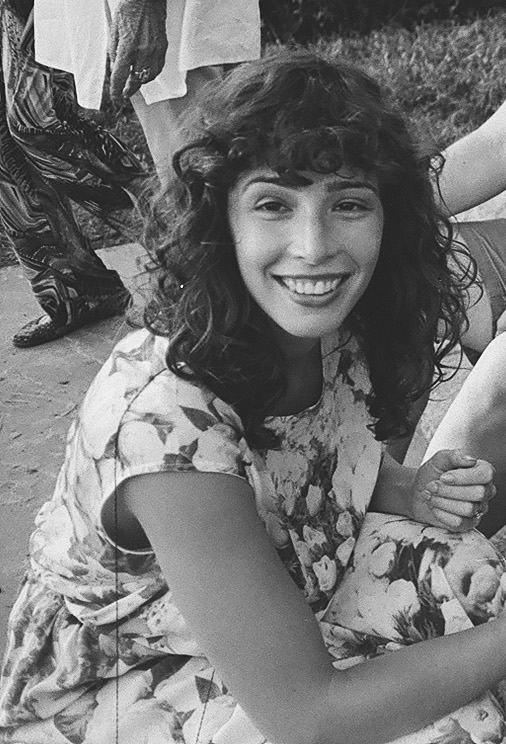LIZ MAGIC LASER
Interview by Michael Bullock
Image courtesy of Creative Time

For years performance art has been the troubled forgotten stepchild of the New York art world. The reasons were obvious galleries didn’t know how to sell it and museums couldn’t figure out how to show it. However for the last five years a handful of forces have quietly come together to change these notions setting the stage to make performance art the most celebrated form of the new decade. This shift has two major champions: Roselee Goldberg and Klaus Biesenbach.
Roselee Goldberg literary wrote the textbook on the subject, Performance Art: From Futurism to the Present. First published in 1979 and now in its third edition. In 2004 Goldberg went on to found PERFORMA, a non-profit multi-disciplinary arts organization for the "research, development, and presentation of 21st Century visual art performance". In 2005] Performa launched the first ever Performance Art Biennial, a three-week long international showcase of emerging and established artist. The Biennial transformed all of New York City into one giant stage and instantly filled a missing gap in the structure of the art world. From the start it was a run away success nearly doubling in size in 2007 and 2009.
Klaus Biesenbach became the director of PS1 in 2009 as well as the Chief Curator at Large for MoMA. Biesenbach quickly made his mark by making performance a focal point of his programming. In 2010 he organized the ground breaking retrospective of his long time friend performance artist Marina Abramović. Half a million people visited the Abramovic retrospective, “The Artist Is Present,” making it not just a success for performance art but one of the most well-attended shows in the history of the museum. Charlie Finch of Artnet wrote” It was the first exhibition of performance art to have an impact on the cultural world at large”. Biesenbach has used his post at PS1 to foster the next generation of Abramovic’s. One artist featured here went as far as to say that this very portfolio was a showcase of Klaus’s children.
Goldberg and Biesenbach’s influence have ushered in a new wave of talent that has brought performance art up to date while making it there own. There work has delighted curators, art lovers and even the general public thanks to a new level of on-line accessibility. Here Modern Weekly introduces the scene brightest new stars: Hanah Bin, Ryan McNamara, Yemenwed, Kalup Linzy, Laurel Nakadate and Liz Magic Laser. Each artist explain how they came to be performance artist, why they make what they make and why how they feel about performance arts epic renaissance.
Can you tell me about your name?
Laser is a german last name that was cut short at Elis Island. It was originally something like Lazaravich. It was shortened before the laser was invented so it was not a double meaning at the time. The Magic my father just threw in. I think he wanted me to be a rock star.
I thought it was an invented artist persona?
No, it’s my birth name. Perhaps there is something about my name that hints towards the less serious, then my work ends up being much more serious then people expect. Although I do use a good deal of humor in my work.
How did you begin to use performance as your medium?
My mother is a choreographer (Wendy Osserman) and I grew up in a loft with her dance company rehearsing. I was first and foremost a photographer. I always kept a distance from live performance because it was something I was immersed in growing up but I would always make photographs for the dancers. Five years ago I started creating situations to photograph and I quickly found there were moments I was interested in that couldn’t be captured in a still image.
What do you think is behind the current renaissance of performance art?
I think the economic downturn is a component. I mean perhaps monumental sculpture is not going to be funded in the same way right now. Also as NY changes people keep looking to the 70’s as a period of vitality. The perception is that it was a playground for artists, with tons of empty warehouse space and lots of freedom.
Is there a freedom in not being tied to object based work?
Even in this time where performance is being celebrated there is still a demand for product. That’s the odd place that we are in right now with performance work. I think people turn to it because of the economic conditions but then its also quickly reified packaged and sold. Using contracts they have found ways to make the ephemeral a product. This recent turn toward the law is something I’m interested in. Now ownership of the piece is a written agreement.
What is your relationship to your audience?
Using actors I try to instigate an antagonistic intense yet playful interaction with strangers. I’m interested in both the art specific audience and a larger audience, so I have done projects in bank vestibules, and the subway. Right now I’m working on a project in Time Square where we will be in contact with so many different types of people. We will be rehearsing on location there for a month and the goals is to let the interactions we have with people shape the work and reformulate the script.
What is the difference between performance (entertainment), and performance art?
Context, that’s the only distinction, if it’s in art space then its performance art. Context means the actual physical space and the type of audience. The aims of performance artist are quite varied in the same way that the aims of film directors are quite varied.
